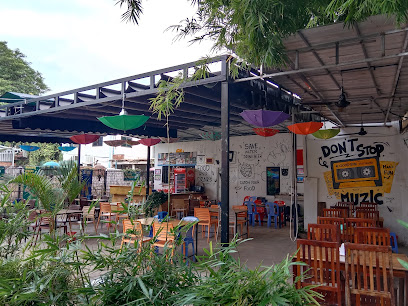
Angkor Wat: The Jewel of Cambodia
Discover Angkor Wat, the iconic temple complex that embodies the grandeur of Cambodia's rich history and stunning Khmer architecture.
Angkor Wat, the largest religious monument in the world, is a breathtaking masterpiece of Khmer architecture. Nestled in the lush landscapes of Siem Reap, this UNESCO World Heritage site offers a glimpse into Cambodia's storied past. As you explore its intricate carvings and massive stone structures, you’ll be transported to a time of divine worship and royal grandeur. With sunrise and sunset views that paint the temple in stunning hues, Angkor Wat is a must-visit for any traveler seeking to experience the magic of Cambodia.
A brief summary to Angkor Wat
- Krong Siem Reap, KH
Local tips
- Arrive early to catch the stunning sunrise over the temple.
- Wear comfortable shoes as you'll be doing a lot of walking on uneven surfaces.
- Bring plenty of water and snacks, as there are limited facilities within the park.
- Consider hiring a local guide to gain deeper insights into the history and architecture.
- Visit during the shoulder seasons (November to February) for milder weather and fewer crowds.
Getting There
-
Tuk-Tuk
To reach Angkor Wat from central Siem Reap, you can hire a tuk-tuk, which is a popular and convenient mode of transportation. Start by heading to the Pub Street area or any hotel in the city center where tuk-tuks are readily available. Negotiate a price (usually around $10 to $15 for a round trip) and ask the driver to take you to Angkor Wat. The journey will take approximately 15 to 20 minutes. Enjoy the scenic ride as you pass through local villages and lush landscapes.
-
Bicycle
If you're feeling adventurous, you can rent a bicycle from one of the many rental shops in Siem Reap. The ride to Angkor Wat is about 6 kilometers and takes approximately 30 to 45 minutes. Start from the central area and head down Sivatha Boulevard, which will eventually lead you to the entrance of the Angkor Archaeological Park. Follow the signs to Angkor Wat, taking in the beautiful surroundings and local life along the way. Remember to bring water and sunscreen!
-
Motorbike
For those who are comfortable riding a motorbike, renting one is another great option. You can find rental shops around the city center. Once you have your motorbike, head out of Siem Reap on the National Road 6, then take a left onto Road 60 (also known as Angkor Road). Follow the signs to Angkor Wat. The ride takes about 15 to 20 minutes. Make sure to wear a helmet and adhere to local traffic rules.
-
Walking
If you prefer to walk, it is possible to trek to Angkor Wat, although it is quite a distance (approximately 6 kilometers). Start from Pub Street and head down Sivatha Boulevard until you reach the Angkor Archaeological Park entrance. The walk can take over an hour, so be prepared for the heat and bring plenty of water. Enjoy the sights and sounds of Siem Reap as you make your way to this iconic site.
Discover more about Angkor Wat
Iconic landmarks you can’t miss
Chey Non Stupa
0.1 km
Discover the serene beauty and rich history of Chey Non Stupa in Siem Reap, a must-visit destination for cultural enthusiasts and spiritual seekers.
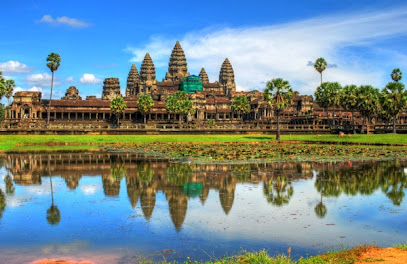
Battle of Lanka Gallery
0.1 km
Explore the Battle of Lanka Gallery, a captivating historical landmark and art gallery in Krong Siem Reap, showcasing Cambodia's vibrant cultural heritage and artistry.
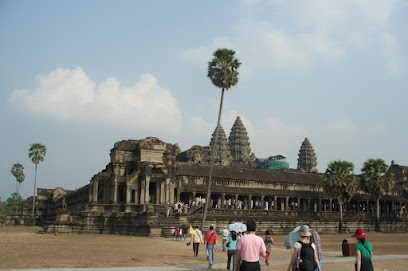
Rainbow Bridge
0.7 km
Experience the serene beauty of Rainbow Bridge in Krong Siem Reap, where nature and architecture unite for breathtaking views.
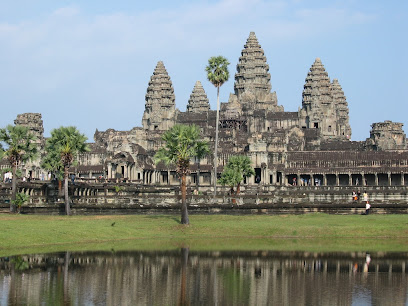
Phimeanakas
3.9 km
Explore the majestic Phimeanakas in Angkor, a historical temple offering a glimpse into Cambodia's rich heritage amidst lush landscapes.
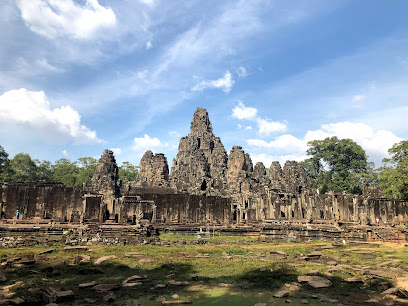
Prasat Khleang Khang Cheung (Prasat North Khleang)
3.9 km
Discover the ancient beauty of Prasat Khleang Khang Cheung, a historical gem in Angkor showcasing the exquisite artistry of the Khmer Empire.
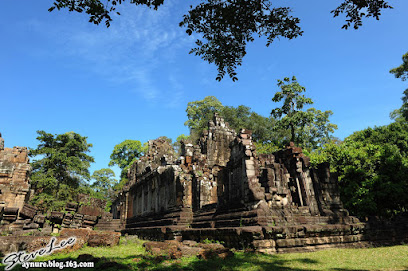
Prasat Ta Keo
3.9 km
Discover the majestic Prasat Ta Keo, a captivating Hindu temple showcasing the grandeur of Khmer architecture in the heart of Cambodia.

Banteay Kdei
3.9 km
Discover the serene beauty of Banteay Kdei, a hidden gem within Angkor Archaeological Park, showcasing Cambodia's rich cultural heritage and stunning Khmer architecture.
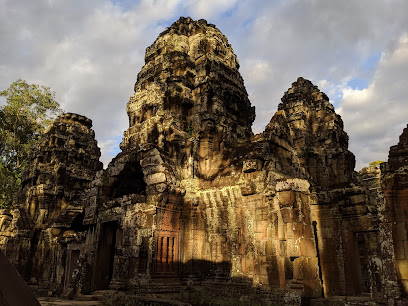
Le Méridien Angkor
4.0 km
Experience the luxury of Le Méridien Angkor, where modern comfort meets traditional Cambodian hospitality in the heart of Siem Reap.
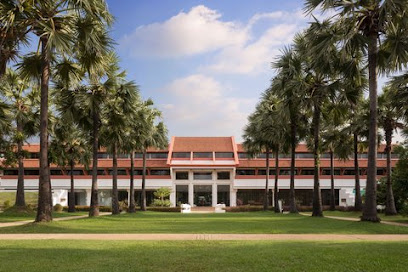
Preah Ponlea Sdach Komlong (Terrace Of The Leper King)
4.0 km
Explore the historical wonders of Preah Ponlea Sdach Komlong – a captivating glimpse into Cambodia's rich Khmer heritage.
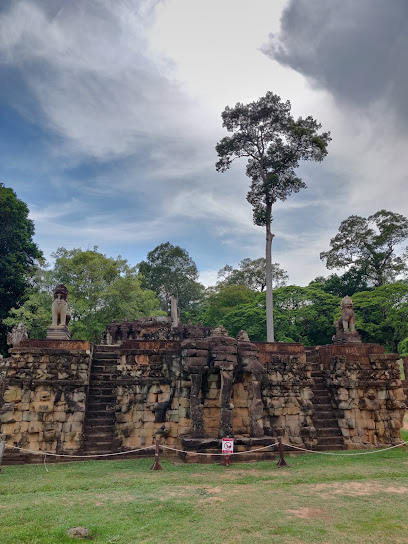
Thommanon Temple
4.0 km
Explore the beauty of Thommanon Temple, a serene historical landmark near Angkor Wat, showcasing exquisite Khmer architecture and rich cultural heritage.
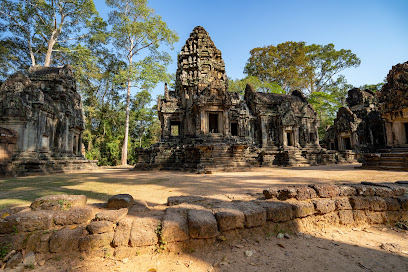
Thommanon
4.0 km
Discover the enchanting Thommanon temple in Siem Reap, a hidden gem of Khmer architecture showcasing intricate carvings and rich history.
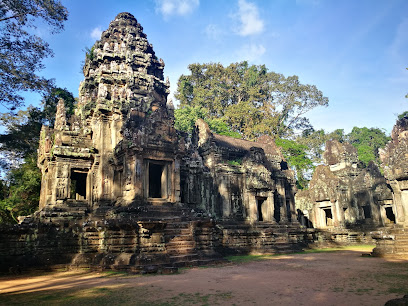
Prasat Preah Pithu Group
4.0 km
Explore the enchanting Prasat Preah Pithu Group, a hidden gem in Angkor Archaeological Park, showcasing the grandeur of ancient Khmer architecture and serene landscapes.
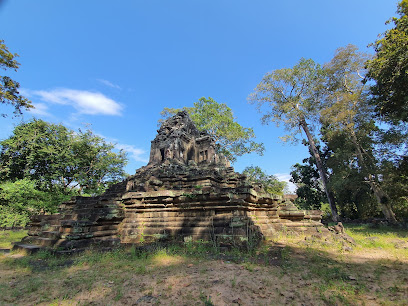
Mane Colonial Classic
4.1 km
Discover luxury and tradition at Mane Colonial Classic, a premier hotel in Siem Reap blending Khmer hospitality with modern elegance.

Khmer Ceramics & Fine Arts Centre
4.1 km
Explore the rich tradition of Cambodian ceramics at the Khmer Ceramics & Fine Arts Centre, where art meets education and creativity flourishes.
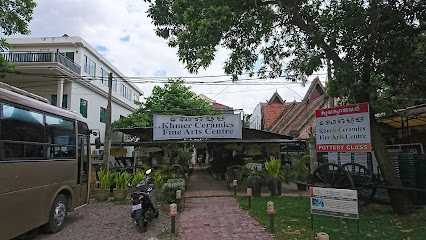
Angkor Panorama Museum
4.2 km
Explore the rich history and artistic brilliance of Cambodia at Angkor Panorama Museum, a modern art marvel in Siem Reap.
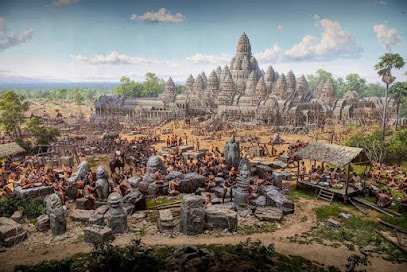
Unmissable attractions to see
Terrace of Honor
0.2 km
Discover the historical richness of the Terrace of Honor in Siem Reap, a must-visit landmark showcasing Cambodia's cultural heritage.
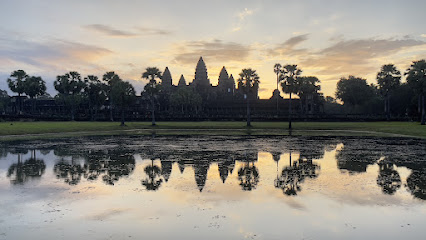
Northern Library
0.4 km
Discover the Northern Library, a stunning heritage site in Krong Siem Reap, showcasing Cambodia's rich history and architectural brilliance.
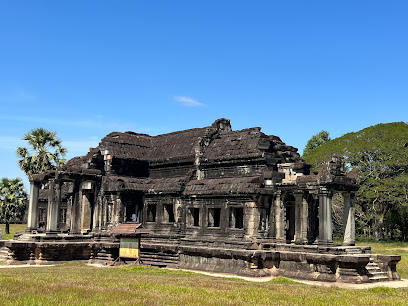
Prohm Kel Temple
1.0 km
Explore the enchanting Prohm Kel Temple, a stunning blend of Buddhist and Hindu architecture nestled in the heart of Angkor's archaeological wonders.
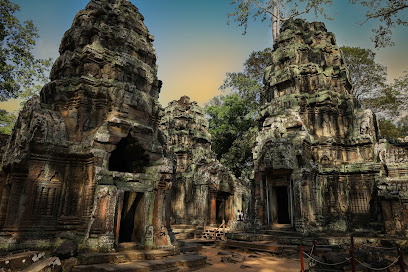
Prasat Rorng Ramong
1.3 km
Explore Prasat Rorng Ramong, a serene historical site in Angkor, showcasing the timeless beauty of Khmer architecture amidst lush landscapes.
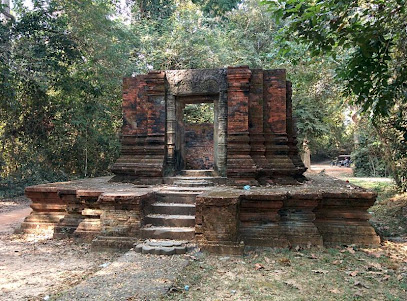
Baksei Chamkrong Temple
1.7 km
Discover the spiritual serenity and architectural beauty of Baksei Chamkrong Temple in the heart of Angkor, Cambodia.
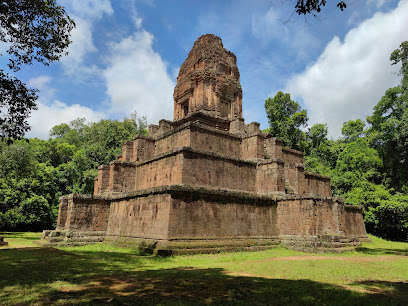
Phnom Bakheng
1.7 km
Experience breathtaking sunsets and explore the ancient ruins at Phnom Bakheng, a majestic Hindu temple in the heart of Angkor Archaeological Park.
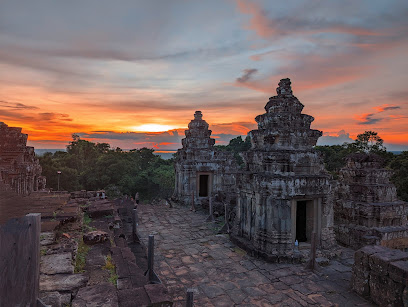
Tonle Om South Gate Bridge
1.8 km
Experience the historical charm and scenic beauty of Tonle Om South Gate Bridge in Krong Siem Reap, a must-visit landmark for all travelers.
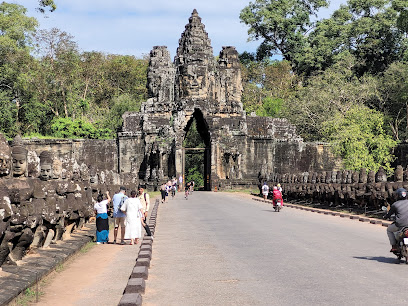
Prasat Chrung Southeast
1.8 km
Discover the enchanting Prasat Chrung Southeast, a serene historical site in Angkor, Cambodia, showcasing the beauty of Khmer architecture and heritage.

Tonle Om Gate (Southern Gate)
1.9 km
Discover the stunning Tonle Om Gate, a magnificent historical landmark at Angkor Thom, showcasing rich Khmer heritage and breathtaking architecture.

Prasat Bei
1.9 km
Explore the serene beauty of Prasat Bei, a hidden Hindu temple gem in Angkor Archaeological Park, Cambodia's cultural treasure.
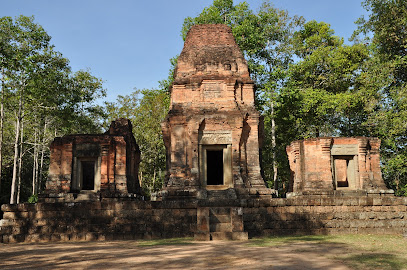
Kongkear Angkor
2.0 km
Experience the tranquil beauty of Cambodia's waterways with Kongkear Angkor boat tours in Krong Siem Reap, exploring culture and nature.
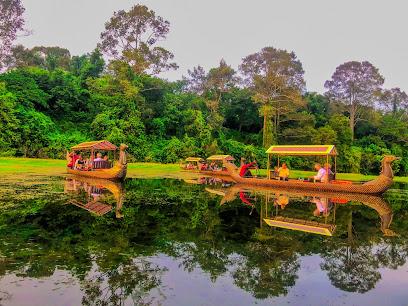
Robean Angkor tour
2.7 km
Experience the rich history and breathtaking beauty of Cambodia at Robean Angkor Tour, where adventure meets culture.
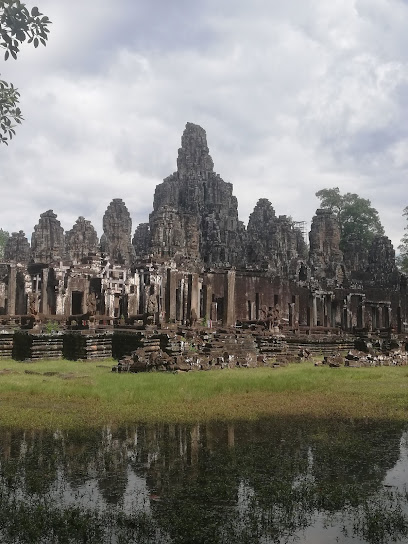
Prasat Chrung Southwest
2.9 km
Explore the serene Prasat Chrung Southwest, a hidden Buddhist temple within Angkor Thom, offering tranquility and rich Khmer architecture.
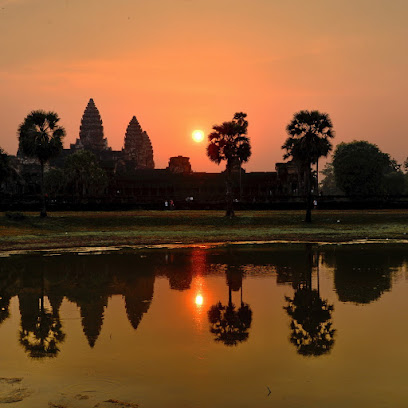
Ta Prohm West Gate
3.2 km
Explore the mystical Ta Prohm West Gate, where ancient Khmer architecture meets the enchanting embrace of nature's roots in Krong Siem Reap.
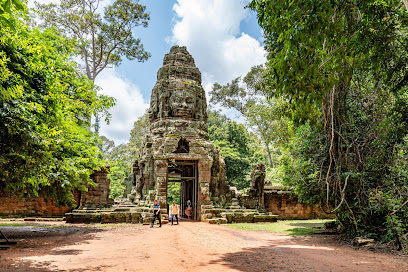
VIMEAN SOKHA MUSEUM
3.2 km
Uncover the rich tapestry of Cambodian history and culture at Vimean Sokha Museum in Siem Reap, a must-visit for every traveler.
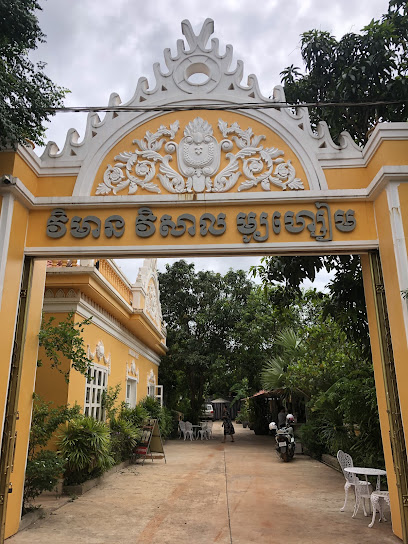
Essential places to dine
New Hope Restaurant
3.6 km
Discover New Hope Restaurant: Where Authentic Cambodian Cuisine Meets Community Empowerment in Siem Reap.
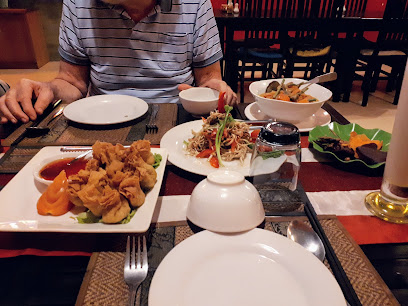
Triple K Angkor Restaurant
4.0 km
Experience authentic Cambodian cuisine at Triple K Angkor Restaurant in Siem Reap - where every dish tells a story.
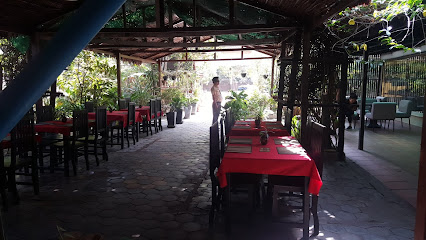
Buffet Phum Yerng
4.1 km
Experience the vibrant flavors of Cambodia at Buffet Phum Yerng, where family-friendly dining meets culinary delight in Krong Siem Reap.
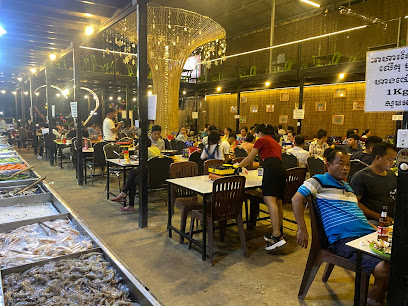
Chita’s cafe
4.3 km
Discover authentic Cambodian flavors and local crafts at Chita’s Cafe in Village 17255 – where every dish tells a story.
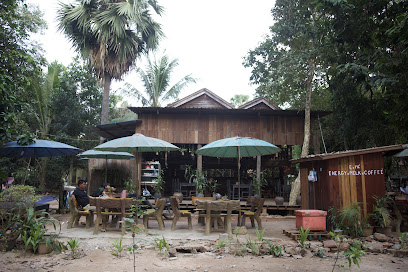
Mouhot's Dream
4.3 km
Discover the essence of French cuisine at Mouhot's Dream in Siem Reap – where elegance meets flavor in every delightful dish.
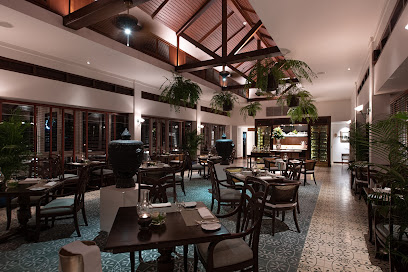
Mahob Cuisine
4.4 km
Experience the rich flavors of Cambodia at Mahob Cuisine – where tradition meets taste in an inviting atmosphere.
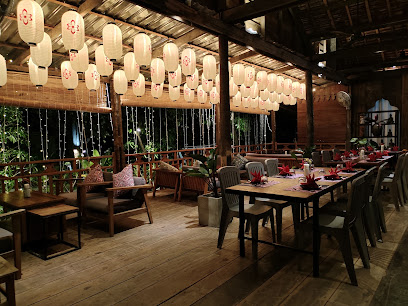
Ktom Sre Khmer Food - អាហារដ្ឋាន ខ្ទមស្រែ ស្រះស្រង់ខាងត្បូង
4.4 km
Discover the flavors of Cambodia at Ktom Sre - an organic family-friendly restaurant offering authentic Khmer dishes.
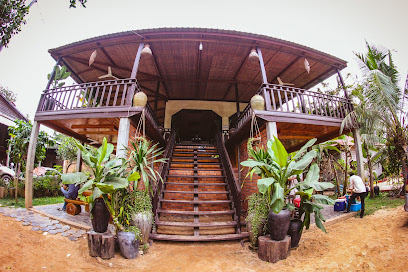
Changkran Khmer Restaurant
4.6 km
Experience authentic Cambodian cuisine at Changkran Khmer Restaurant - where tradition meets fine dining in an inviting atmosphere.
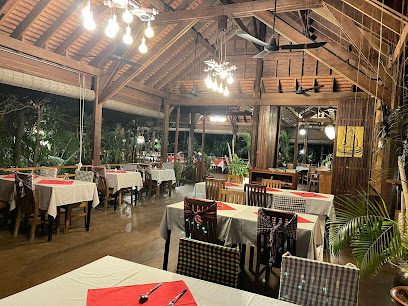
Sisters Yam
4.6 km
Experience exquisite seafood dining at Sisters Yam in Siem Reap - where fresh flavors meet Cambodian culinary traditions.
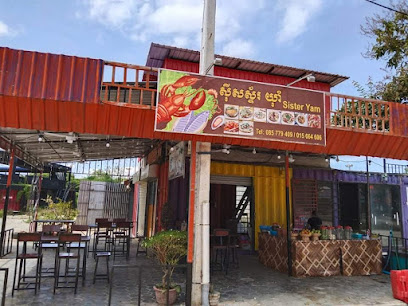
Khmer Family Restaurant
4.7 km
Experience authentic Cambodian flavors at Khmer Family Restaurant in Siem Reap—perfect for families and food enthusiasts.
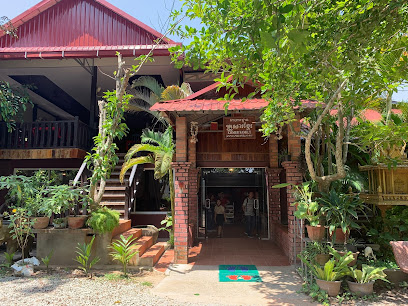
Khmer Village Restaurant
4.7 km
Experience authentic Cambodian cuisine at Khmer Village Restaurant in Siem Reap, where traditional flavors meet warm hospitality.
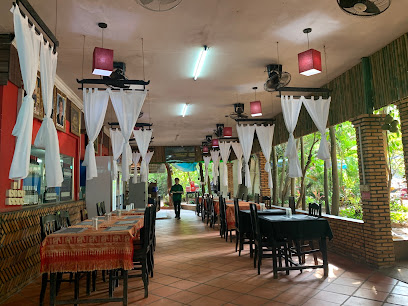
Ptes Borann Restaurant
4.9 km
Experience genuine Cambodian cuisine at Ptes Borann Restaurant in Srah Srang - where flavor meets tradition.
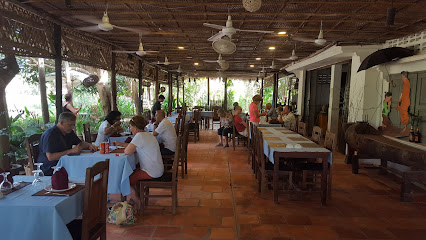
Pho Yong Restaurant
5.0 km
Discover authentic Vietnamese flavors at Pho Yong Restaurant in Krong Siem Reap - a culinary gem offering delightful Southeast Asian cuisine.
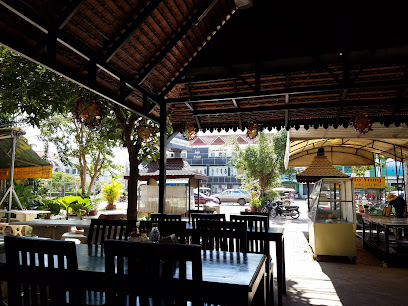
The Khmer BBQ Suki
5.0 km
Experience the authentic taste of Cambodia with delicious barbecue at The Khmer BBQ Suki in Krong Siem Reap.
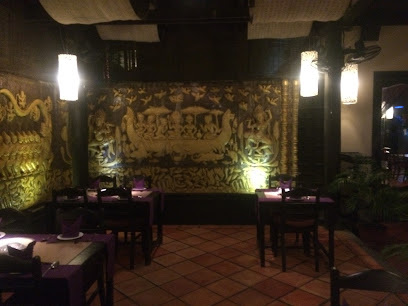
Nary Restaurant
5.0 km
Experience authentic Cambodian cuisine at Nary Restaurant in Krong Siem Reap - where every dish tells a story.
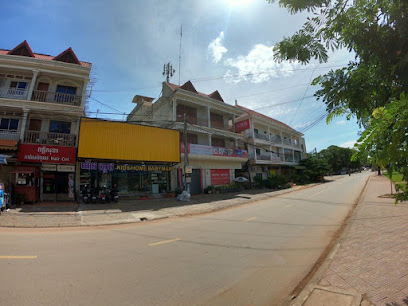
Markets, malls and hidden boutiques
Angkor Pavis Souvenir & Mart 2
1.1 km
Discover unique Cambodian gifts and souvenirs at Angkor Pavis Souvenir & Mart 2, a treasure trove in Siem Reap showcasing local craftsmanship.
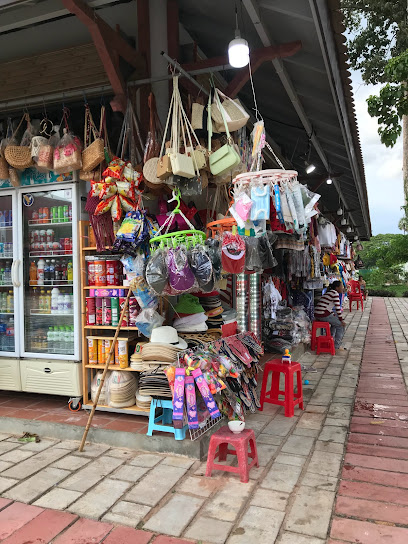
Jayav Art
3.7 km
Uncover the essence of Cambodia at Jayav Art, your go-to souvenir store for unique handmade crafts and cultural treasures in Siem Reap.
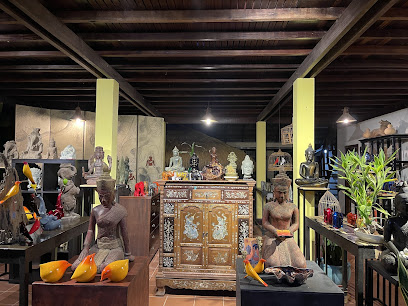
The Cocoon House Art Gallery, Concept Store, Skateshop and Vintage - by Cocoon Limited
3.8 km
Experience the creative fusion of art, fashion, and skate culture at The Cocoon House, a unique destination in Krong Siem Reap.
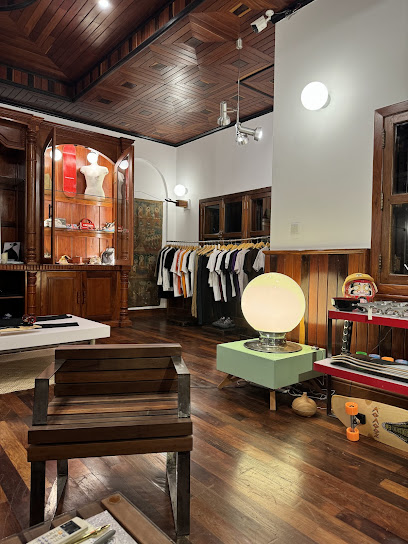
Sam Orn silver handicraft souvenir shop
4.3 km
Explore the craftsmanship of Cambodia at Sam Orn Silver Handicraft Souvenir Shop, where exquisite silver treasures await every traveler.
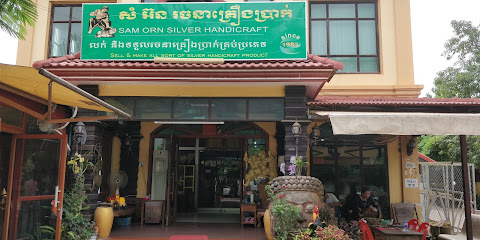
Angkor Wat Boutique
4.6 km
Explore Angkor Wat Boutique for authentic Cambodian souvenirs and crafts, capturing the essence of Cambodia's rich culture and artistry.
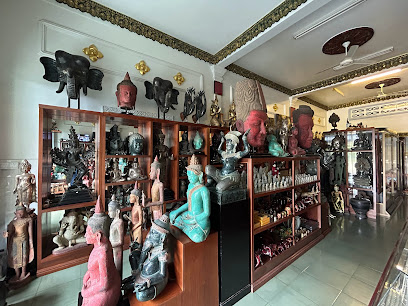
Chum Theany Angkor Souvenir Shop
4.8 km
Discover authentic Cambodian handicrafts and unique souvenirs at Chum Theany Angkor Souvenir Shop in Siem Reap, a treasure for every traveler.

Khmer Empire
4.9 km
Explore exquisite jewelry inspired by the rich cultural heritage of the Khmer Empire in Siem Reap, Cambodia.
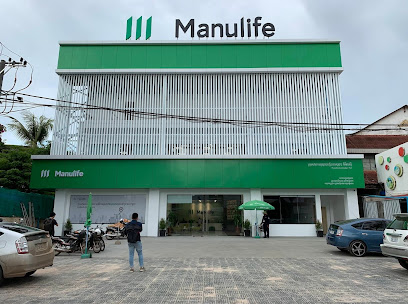
Cambodian cottage industries
5.0 km
Explore the rich craftsmanship of Cambodia at Cambodian Cottage Industries, your destination for unique gifts and authentic handicrafts.

Cartier Siem Reap
5.1 km
Experience luxury shopping at Cartier Siem Reap, home to exquisite jewelry, fashion accessories, and fine perfumes in the heart of Cambodia.

Coconut Street store
5.3 km
Explore the vibrant Coconut Street Store in Siem Reap for unique handicrafts and local delicacies that celebrate Cambodian culture.

SaStrey
5.6 km
Explore SaStrey in Siem Reap for authentic Cambodian souvenirs and support local artisans with every purchase.
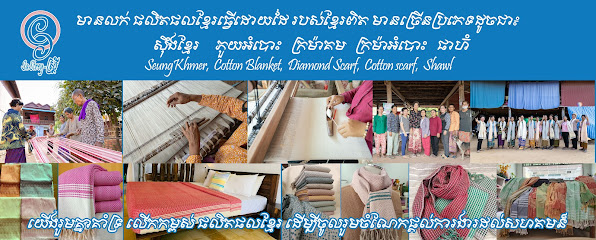
Vin Vin Shop2
5.6 km
Discover unique clothing that blends traditional Cambodian culture with modern fashion at Vin Vin Shop2 in Krong Siem Reap.
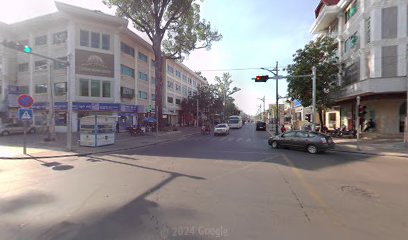
Flower Shop
5.6 km
Explore the serene Flower Shop in Krong Siem Reap for stunning blooms and unique Buddhist supplies, blending beauty and culture in one delightful stop.
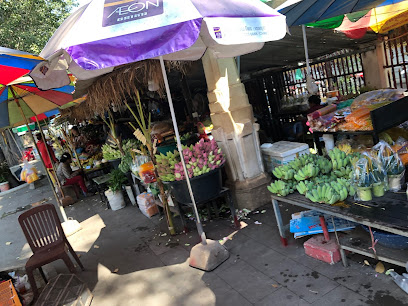
Level Store
5.6 km
Discover the best of Cambodian fashion at Level Store in Siem Reap, where tradition meets modern style in an unforgettable shopping experience.
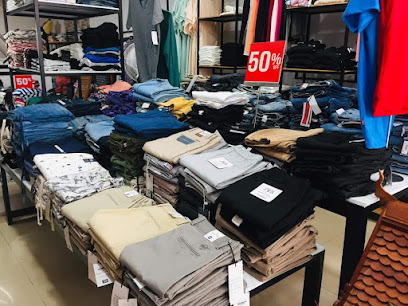
MINISO The Heritage Walk
5.6 km
Explore trendy fashion accessories and unique finds at MINISO The Heritage Walk in Krong Siem Reap, where style meets affordability.

Essential bars & hidden hideouts
Elephant Bar
5.4 km
Indulge in handcrafted cocktails and a vibrant atmosphere at Elephant Bar, the ultimate cocktail destination in Siem Reap.
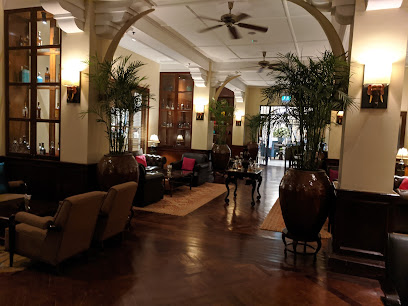
Akas Rooftop Sky Bar by The Twizt
6.1 km
Experience breathtaking views, exquisite cocktails, and a vibrant atmosphere at Akas Rooftop Sky Bar in Krong Siem Reap.
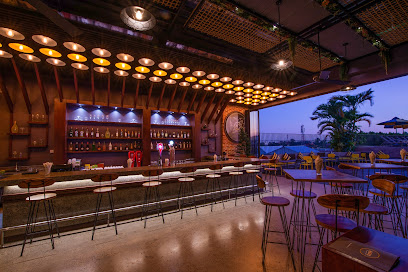
JD's Siem reap
6.3 km
Experience the vibrant nightlife at JD's Siem Reap, the ultimate bar for cocktails and local culture in the heart of Cambodia.
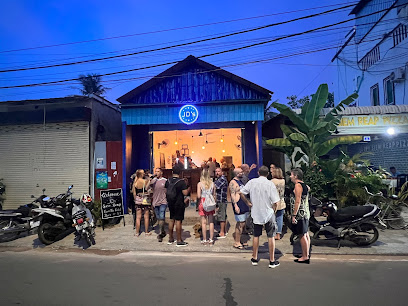
TREE bar
6.4 km
Experience the vibrant nightlife at TREE Bar in Krong Siem Reap, where eclectic drinks and lively ambiance create unforgettable memories.
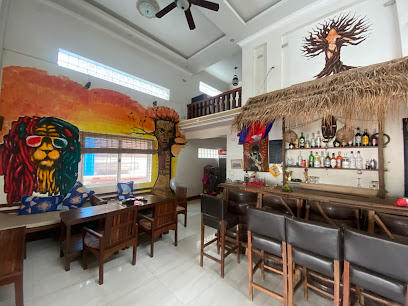
Barcode Bar Siem Reap
6.4 km
Unwind with a cocktail at Barcode Bar Siem Reap, where vibrant nightlife meets exceptional service in a lively atmosphere.
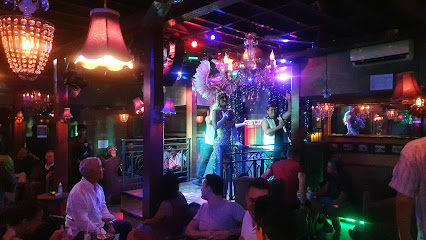
Long's Bar
6.5 km
Discover the vibrant atmosphere and unique cocktails at Long's Bar, a must-visit destination in Siem Reap for travelers and locals alike.
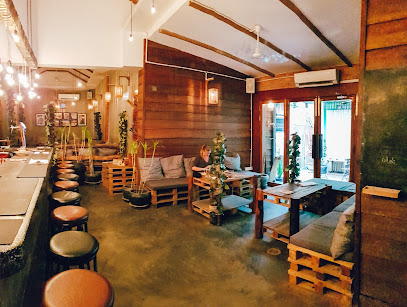
Cozy Bar
6.5 km
Discover the vibrant energy of Cozy Bar in Siem Reap, where affordable drinks and a friendly atmosphere await every traveler.
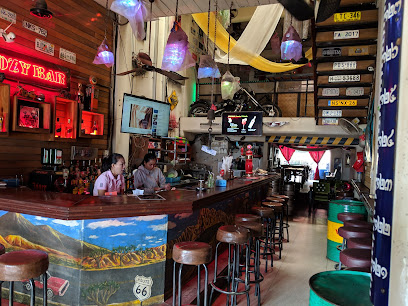
Silk Garden Bar and Restaurant
6.5 km
Indulge in scrumptious grilled dishes in a cozy setting at Silk Garden Bar and Restaurant, a true gem in Krong Siem Reap.
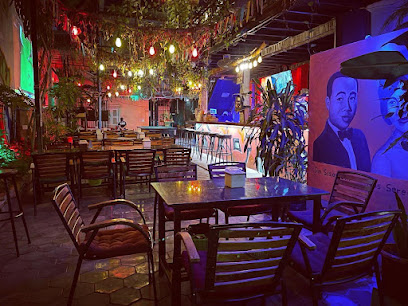
ASANA OLD WOODEN HOUSE Cocktail Bar
6.5 km
Experience the perfect blend of Asian flavors and crafted cocktails at ASANA OLD WOODEN HOUSE, a cozy bar in the heart of Siem Reap.
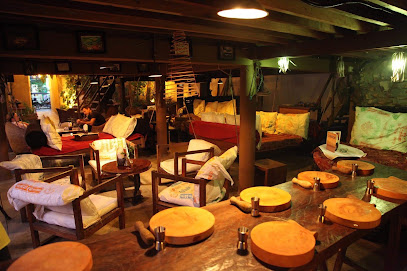
Homie Pub Siem Reap
6.5 km
Discover the lively atmosphere and refreshing drinks at Homie Pub, a favorite spot for travelers in Siem Reap's vibrant nightlife scene.
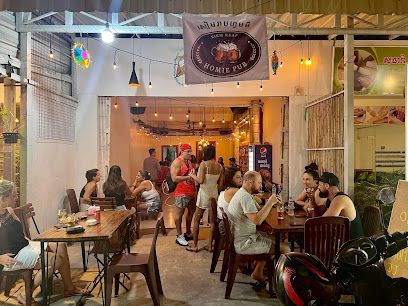
Laundry
6.5 km
Discover Siem Reap's lively music scene at Laundry, where great vibes, affordable drinks, and fantastic live performances come together.
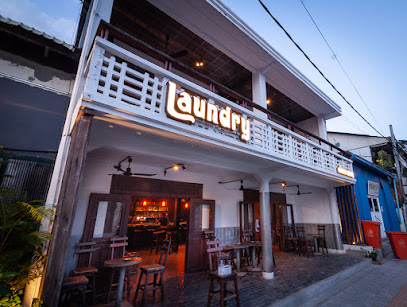
The Angkor What? Bar
6.5 km
Discover the vibrant nightlife at The Angkor What? Bar in Siem Reap, where fun meets affordable drinks and a lively atmosphere.
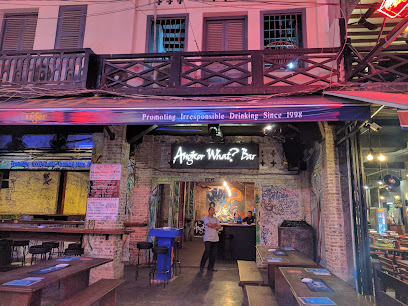
Miss Wong Cocktail Bar
6.5 km
Unwind at Miss Wong Cocktail Bar, where creative cocktails and authentic dim sum meet in a stylish, vibrant atmosphere in Krong Siem Reap.

SO 26
6.5 km
Experience the vibrant flavors of Asian fusion cuisine and lively nightlife at SO 26, the must-visit bar and restaurant in Krong Siem Reap.
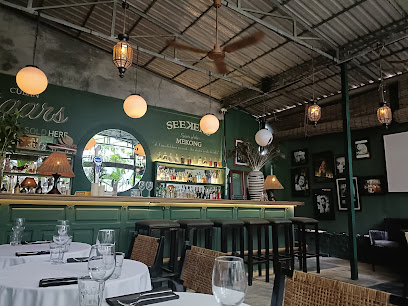
The Best Friend Bar & Cafe
6.6 km
Discover the charm of The Best Friend Bar & Cafe in Krong Siem Reap, where cozy ambiance meets delightful drinks and friendly service.
